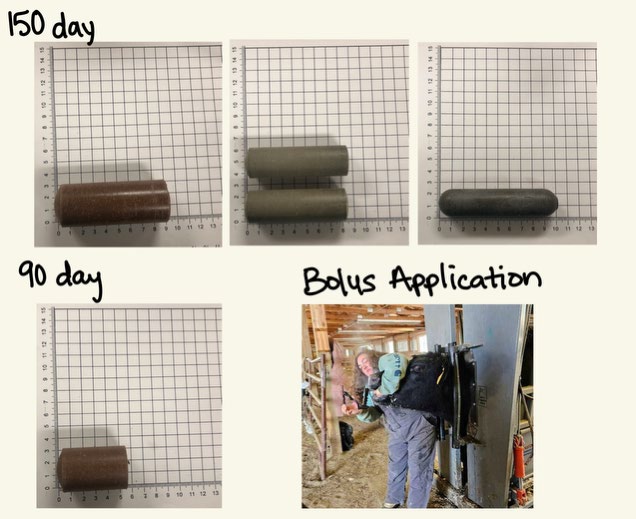Rumen Bolus and Providing Vitamins and Minerals to Cows
by Madysn Mangum, Master's Student, Montana State University
Download a printable version of this information.
In the Western United States, beef cattle production is a major economic driver, making each individual decision crucial. To maximize production outputs, beef cattle producers do their best to match cattle to the environment, allowing them to lower input costs. However, in the Western U.S with higher elevation, semi-arid, and rugged topography it can be a challenge to depend solely on environmental forages to meet cattle nutrient requirements. Additionally, the Western U.S growing season is less than 120 days. Therefore, 2/3 of the year forages are dormant and are of lower quality. To overcome this issue and maximize production, producers may use different supplementation sources such as protein, vitamins, or minerals. This can be a heavy input cost added to a producer’s budget.
More specifically, vitamins and minerals may be provided with different delivery methods such as self-fed, injectables, drenches, and boluses. Each method of delivery has both benefits and challenges. Montana State University has collaborated with Cargill Animal Nutrition to research sustained release ruminal/reticular vitamin/mineral boluses. Currently, there is limited research available on these boluses. Therefore, several factors were considered in the project, rate of degradation, nutrients absorption, and delivery effectiveness.
The goal of the project was to identify a bolus that producers can use while cattle are grazing rangeland and traditional delivery of vitamins and minerals is not possible. Rangelands are also home to wildlife, which can also limit the use of traditional delivery methods. Additionally, another challenge is cattle dominance, with older, boss cows limiting supplement intake by smaller, younger cows.
One potential delivery method to limit intake challenges is to use a sustained release bolus. Current research studied three different prototypes that were developed to degrade over a period of 150 days and one that was developed to degrade over 90 days. The first step in the current research was to evaluate bolus degradation over time. Based on the current study, the 90-day bolus was the closest to degrading at a consistent rate. The current results indicate more research is needed to develop additional boluses that degrade consistently over the longer, 150-day period.
Figure 1: Pictures of the different bolus prototypes and oral bolus gun application.

For more information, please contact Madysn Mangum (madysnmangum@montana.edu) or Dr. Tim DelCurto (timothy.delcurto@montana.edu).
